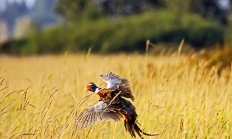
Search myodfw.com
Glen Otto Park - 1102 E Historic Columbia River Hwy. Troutdale, 97060
Find maps, boundary descriptions and the percent public land for the Melrose Unit.
Find maps, boundary descriptions and the percent public land for the Stott Mountain Unit.

Find maps, boundary descriptions and the percent public land for the Trask Unit.

Find maps, boundary information and the percent public land in the Sixes Unit.
Find maps, boundary information and the percent public land in the Tioga Unit.
Find maps, boundary descriptions and the percent public land for the Wenaha Unit.
Find maps, boundary information and the percent public land in the Evans Creek Unit.
Find maps, boundary information and the percent public land in the Maury Unit.
Find maps, boundary descriptions and the percent public land for the Mt. Emily Unit.
Find maps, boundary descriptions and the percent public land for the Owyhee Unit.
Find maps, boundary descriptions and hunts available in the new Mid Columbia Hunt Area. Download printable PDF map
This is your one-stop platform for learning how to hunt and fish in Oregon. Register here to participate in one or more of the many statewide workshops offered to adults. Enjoy the great outdoors even more by building your confidence and expanding your knowledge! Look no further: hunter safety courses and field days Choose between a conventional in-person course or complete one of the online education courses plus an in-person field day. Sign up for a location, date and time that works best with your schedule. Hunter safety education events are offered year-round and taught by certified volunteer instructors statewide

Find maps, boundary descriptions and hunts available in the new South Wallowa Hunt Area. Download printable PDF map
Find maps, boundary descriptions and hunts available in the new Trout Creek Hunt Area. Download printable PDF map
Find maps, boundary descriptions and hunts available in the new Mid Columbia Hunt Area. Download printable PDF map
Find maps, boundary descriptions and hunts available in the new North Blues Hunt Area. Download printable PDF map
Find maps, boundary descriptions and hunts available in the new North Blues Hunt Area. Download printable PDF map
Find maps, boundary descriptions and the percent public land for the Snake River Unit.
